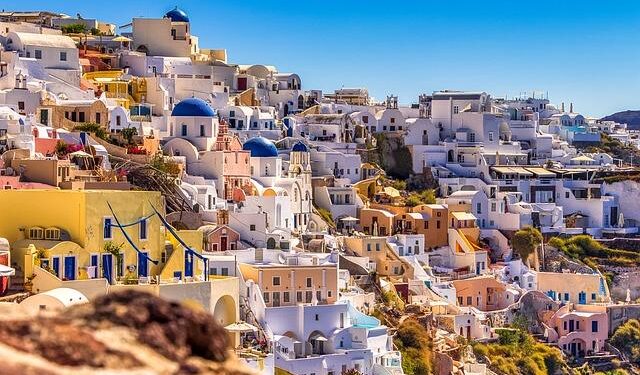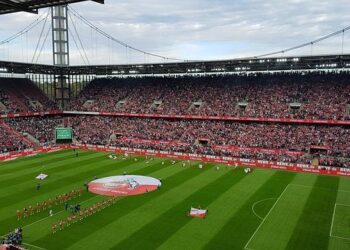SantoriniŌĆÖs Earthquake Swarm Declines as Thousands Return to the Island
Santorini, the picturesque Greek island known for its stunning sunsets and unique volcanic landscape, is witnessing a gradual decline in seismic activity following a recent swarm of earthquakes that startled residents and prompted mass evacuations. According to reports from the Guernsey Press, the seismic tremors, which began earlier this month, had raised concerns about the safety of locals and the influx of tourists. However,as the frequency of these earthquakes diminishes,many are returning to the island,eager to restore a sense of normalcy and enjoy what this iconic destination has to offer. This article explores the current state of SantoriniŌĆÖs seismic activity, its implications for the local community, and the ongoing efforts to ensure the safety of both residents and visitors as the island moves towards recovery.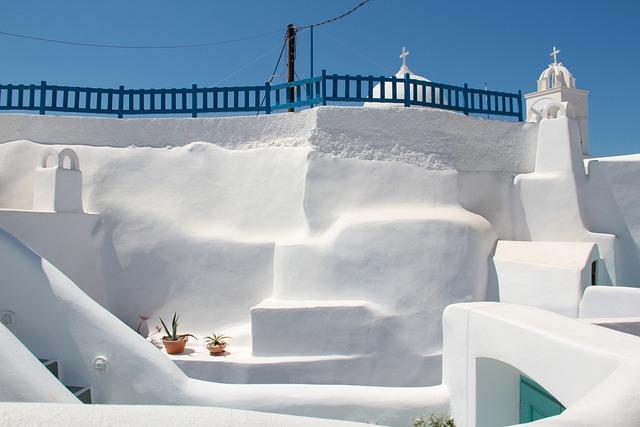
Santorinis Earthquake Swarm: understanding the Geological Context
The recent earthquake swarm around Santorini has raised questions about the underlying geological factors contributing to these seismic events. Santorini, a volcanic island in the Aegean Sea, is part of the Hellenic Volcanic Arc, which is characterized by complex tectonic interactions. The interaction between the African and Eurasian tectonic plates leads to intense geological activity, including frequent earthquakes and volcanic eruptions. Notably, the volcanic history of Santorini showcases its potential for eruptions, with catastrophic events recorded in detail, the most significant being the Minoan eruption around 1600 BCE. This geological context is critical for understanding the current swarm,which indicates possible reactivation of magmatic processes beneath the island.
To grasp the implications of this earthquake swarm, one must consider the mechanism driving these seismic activities. Earthquakes in such regions typically result from the movement of magma as it migrates through the crust. As pressure builds, it can lead to fracturing and the release of energy in the form of earthquakes. The following factors contribute to the earthquake dynamics in Santorini:
- Magma Movement: Rising magma creating pressure.
- Tectonic Plate Movements: Interactions between plates generating stress.
- Regional Faults: Localized fault lines exacerbating seismicity.
As the swarm activity shows signs of decline, scientists remain vigilant. Continuous monitoring is essential to ensure safety for the thousands of residents returning to the island. The table below summarizes the recent seismic events to provide a clearer picture of the intensity and frequency associated with the swarm:
| Date | Magnitude | Depth (km) |
|---|---|---|
| Oct 1, 2023 | 4.6 | 12 |
| Oct 5, 2023 | 4.3 | 10 |
| Oct 10, 2023 | 3.9 | 9 |
| oct 15, 2023 | 4.0 | 11 |
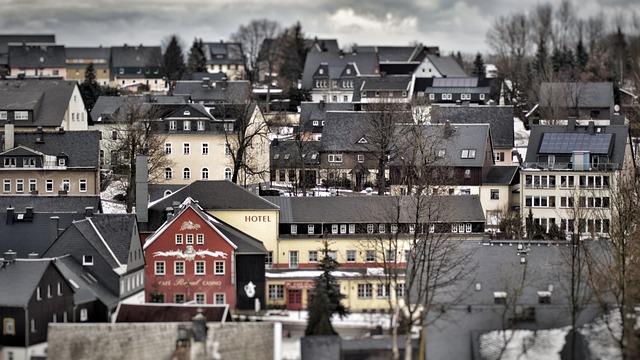
Impact on Local Communities: Resilience and Recovery Efforts
The recent decline in earthquake swarms in Santorini has paved the way for numerous local community efforts aimed at resilience and recovery. Residents have displayed remarkable strength and unity as thay collaborated to restore their homeland. Community groups have organized various initiatives, including:
- Fundraising events to support those most affected by the tremors.
- workshops focused on disaster preparedness and building safety.
- Community clean-up drives to address the physical damage in urban areas.
Along with physical recovery projects,local businesses have swiftly adapted their strategies to help regenerate the economy,drawing tourists back to the island.Initiatives such as special offers and themed events aim to entice visitors while ensuring their safety. A preliminary survey assessing the economic impact shows promising signs:
| Sector | Recovery Status | projected Growth |
|---|---|---|
| Hospitality | 85% operational | 15% over the next year |
| Retail | 78% operational | 10% over the next year |
| Tourism | 70% operational | 20% over the next year |
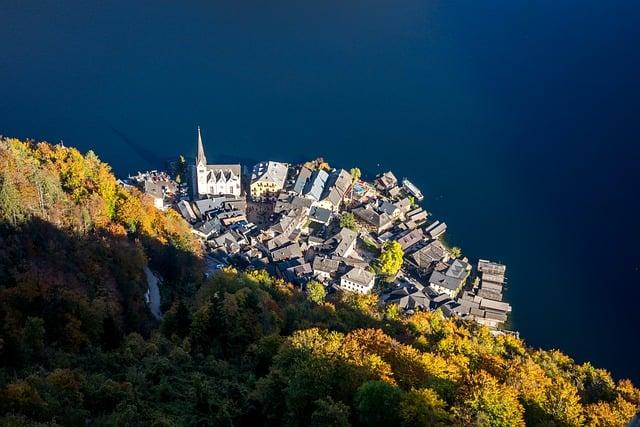
Tourism Trends Post-Earthquake: Insights for Visitors and businesses
The recent decline in seismic activity around Santorini has revived interest among visitors eager to explore this iconic island. With tourism steadily picking up, travelers can expect to encounter a unique blend of beauty and resilience. The aftermath of the earthquake swarm has led many businesses to innovate in order to attract visitors, offering special deals and enhanced safety measures. Key points to consider for travelers include:
- Updated Safety Protocols: Many accommodations have adopted stricter safety measures to ensure guest comfort.
- Local Experiences: Tours focusing on geological and architectural resilience are becoming increasingly popular.
- Support Local Businesses: Travelers are encouraged to engage with local artisans and eateries, boosting the islandŌĆÖs economy.
For businesses navigating this transition, adapting to new tourist expectations is crucial. emphasis on sustainability and local culture can differentiate services in a competitive market. With the island’s economy relying heavily on tourism, the following strategies are worth noting:
| Strategy | Description |
|---|---|
| Virtual Tours | Offering online experiences to engage potential visitors before they arrive. |
| Collaborative Packages | Partnering with local businesses for bundled services,such as dining and guided tours. |
| Community Engagement | Involving locals in tourism initiatives to enhance authenticity and visitor experience. |

Safety Measures and Preparedness: Recommendations for residents and Tourists
In the wake of the recent seismic activity in Santorini, both residents and tourists are encouraged to adopt essential safety measures to ensure their well-being. It is imperative to stay informed about local alerts and updates regarding seismic activity. Residents should familiarize themselves with emergency protocols and consider creating an evacuation plan, ensuring all family members know designated meeting points and safe exits. Tourists should carry emergency contact information and familiarize themselves with the location of local shelters. Key recommendations include:
- Stay Calm: In the event of shaking, remain composed while assessing your surroundings.
- Drop, Cover, and Hold On: Protect yourself from falling objects while staying low to the ground.
- Emergency Kits: Equip yourself with essentialsŌĆömedications, water, non-perishable food, and a flashlight.
- Communication: Keep a portable charger and local emergency numbers accessible at all times.
Preparedness extends beyond immediate reactions; understanding the structure of your current surroundings is vital. for those residing or vacationing in multi-story buildings, familiarize yourself with the nearest exit routes and alternative paths to prevent getting trapped. Local authorities are also advising both tourists and residents to participate in community training sessions focusing on earthquake readiness. The following table outlines key contact details and resources available for assistance:
| Resource | Contact Number | Location |
|---|---|---|
| Local Emergency Services | 112 | Available Islandwide |
| Santorini Tourism Office | +30 22860 22707 | Fira Town |
| Hospital of Santorini | +30 22860 25700 | Messaria |

Looking Ahead: Long-Term Monitoring and Geological Research in Santorini
The recent decline in earthquake activity in Santorini presents an opportune moment for researchers and geologists to intensify their long-term studies of the region. This volcanic island, shaped by dynamic geological processes, requires consistent monitoring to assess the ongoing risks and to understand its evolving landscape. Focused initiatives could include:
- Seismic Monitoring: enhanced surveillance systems to detect and analyze any future seismic activity.
- geological Mapping: Detailed studies of the island’s geological features,including the caldera and volcanic formations.
- Public Safety Protocols: Progress of guidelines for residents and tourists based on the latest geological data.
Furthermore, collaboration among local authorities, researchers, and international geological organizations will maximize the effectiveness of these studies.Developing a comprehensive database of volcanic activity and its impacts on the local environment can provide critical insights for future risk assessment. To illustrate the ongoing efforts and findings, the following table summarizes key monitoring activities:
| Activity | Frequency | Objective |
|---|---|---|
| Seismic Data Collection | Continuous | Identify patterns in seismic activity |
| Gas Emissions Monitoring | Monthly | Assess volcanic gas levels |
| Ground Deformation Surveys | Quarterly | Track changes in land structure |
Wrapping Up
the recent decline in the earthquake swarm affecting Santorini comes as a relief to both residents and returning tourists. As stability begins to return to the iconic island, authorities and seismologists continue to monitor the situation closely, ensuring that safety remains a priority. With thousands of visitors eager to experience santoriniŌĆÖs breathtaking landscapes and rich history once again, the island appears poised to rebound from this seismic episode. As further updates emerge, it is essential for travelers and locals alike to stay informed, adapting to the evolving geological landscape while cherishing the beauty and tranquillity that Santorini has to offer.


